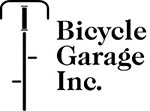Bicycle Lubrication
Bicycles are made up of many parts that work best and last longest when properly lubed. View this diagram to see the lube points for modern bicycles. Below, we explain what's involved.
Lubricants & Grease
The lubricant used the most is a liquid lube, which we sell in small drip and spray containers. We recommend purchasing our cycling-specific lubes because they're perfectly formulated for your two-wheeler. This matters because the typical all-around lubes sold at hardware stores are often too thick or too thin to lubricate your bike properly. And, they'll usually leave an oily residue that can make a mess of your machine and clothing. Also, some products will attack the seals on bike components damaging your equipment.
Liquid lubes come in a wide and sometimes confusing variety. We can recommend one perfect for your bike and our riding conditions. You only need a small container and it'll last for many rides.
Depending on how much you plan to work on your bike, you may want to pick up some grease, too. This is a thicker lube, about the consistency of Crisco shortening. We sell it in squeeze tubes.
You can't see it, but grease is what's inside the headset (steering mechanism), hubs, bottom bracket and pedals. There are bearings inside these components and they sit in a bed of grease that keeps them lubed and turning freely.
Because grease is thick and these systems are protected from the elements, it's unlikely you'll need to work on these parts. However, grease is also used to lubricate threads and parts that fit together, such as the seatpost and stem and the associated bolts. If you plan to work on these parts, it's good to have some grease on hand.
Lubing It Part By Part
How often you lube
your bike depends on how you use it. Ideally, the moving parts will
always be lightly lubed. A dry, squeaking bike needs lube. A bike
covered with grime means you're using too much lube (or the wrong lube).
Applying
lube is just a matter of dripping or spraying some on, operating the
part to get the lube down inside, letting it sit for a bit for the lube
to fully penetrate and then wiping off the excess.
Chain: lubricate
the lower run of links (see diagram) as you pedal backwards with your
hand until you've lightly coated the entire chain.
Brakes:
lube the pivot points where the brake parts move against each other.
If there's a quick-release mechanism and/or adjustment barrel
(sometimes on the brake lever; see diagram), lightly lube these, too
(on the threads for the adjustment barrel). Do NOT get lube on the brake pads or rims!
Derailleurs:
wet the pivot points on the derailleur bodies. And, for the rear, while
the bike's resting on its side, apply a little to the center of the
derailleur pulleys. Lube the adjustment barrel, too.
Clipless pedals:
apply lube if your shoes and pedals are creaking when you ride and/or
it's difficult to get in or out. Remember to remove your shoes before
walking into the house so you don't leave oily footprints across the
carpet!
Cables: most brake and shift cables don't
require lube because they're inside nylon-lined housing. If yours bind,
however, you can add lube if your bike has split housing stops. These
allow accessing the cables and lubing. It's done by opening the brake
quick release to create slack and then pulling slightly to free the
housing from the frame stops. You can then slide the housing to get at
the cable inside. For derailleurs, shift onto the largest cog or ring
and then move the levers back without pedaling. This creates enough
slack to get the housing out of the stops and lube the shift cables (if
necessary, don't forget to lube where the cables pass beneath the
bottom bracket, too).
Suspension fork: double-check that
your lube won't harm nylon or rubber seals. If it's safe, you can apply
a few drops to the upper fork legs and push down on your handlebars a
few times to compress the fork and work the lube past the seals. This
will keep the fork's action smooth.
